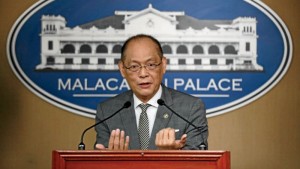On March 5, two seemingly unrelated events occurred that significantly affected our agriculture.
This first event of focus group discussions was to update the findings and recommendations of seven water presummits held during the first part of 2017. The country is confronted by a water crisis that has caused more than 50 people to die every day, the onset of El Niño we are ill-prepared for, and the fact that several key recommendations of the 2017 seven presummits have still not been acted upon.
PRRD’s political will shown in Boracay and Manila Bay should now be exercised in water areas that are even more important because of their greater overall impact, especially for the poor.
One example is the proposed presidential directive increasing our dismal 4 percent rainwater harvesting rate (compared to India’s 60 percent in key areas). Because this was not done, all the rainwater over the past two years that could have been used to mitigate the impact of El Niño is not there.
The second event involved farmers’ expressing in a press conference their anger over the way the government treated rice trade liberalization. After our government was given three extensions and 25 years to prepare by the World Trade Organization, our farmers were not provided the necessary support services to prepare for liberalization.
Partly led by Raul Montemayor of the Federation of Free Farmers and Romeo Royandoyan of Centro Saka, these farmers argued that the rice tariffication today will be harmful to the farmers, the consumers, and the credibility of our government.
Studies have shown that the 35-percent tariff is much lower than the 70-percent tariff that would enable our farmers to compete. At this rate, Philrice’s Flordelis Bordey said 53 out of 82 (or 65 percent) of our rice producing provinces would not survive. Some 40 percent of our 3.4 million farmers will will not be able to sell their produce because of the low imported prices. They cannot heed the ill-informed suggestion of a senior government official that they can immediately produce alternative crops. This takes time, and the necessary support services are simply not there.
The consumers will certainly immediately benefit from lower rice prices. But in the long run, they face the prospect of paying much higher prices. In 2008, when our farmers had a significant rice production gap and a great need to import, the world market responded by increasing the $400 per ton of imported rice to $1,000.
With El Niño, the 35-percent tariff, and China erecting structures that will significantly decrease the flow of water from the Mekong Delta to affected counties where we wish to import, overall rice supply will decrease. Consequently, prices will increase, harming our food security, especially for the poor.
Thirdly, the credibility of our government in agriculture governance will further deteriorate. Already, our average 1.5 percent agriculture growth rate over the last eight years has significantly dragged down our overall growth of more than 6 percent. The mechanization budget of P5 billion annually given to Philmech, a small organization in Nueva Ecija with no other offices in the Philippines, shows a lack of due diligence in making this decision. Depriving the National Food Authority of the ability to effectively monitor the rice trade—unless this function is given to another organization—shows inadequate foresight in understanding the dire consequences in areas such as rice smuggling and cartel behavior.
This double whammy could have been managed much better with the proper preparation. In the same manner, our current water crisis suffers the same tragedy of lack of analysis and strategic direction. Government must now act, rather than react. To avoid this dangerous situation in our country, a special high level group with outside experts must be formed and report to PRRD himself. It is only with PRRD’s demonstrated political will that we can overcome this enormous challenge.


